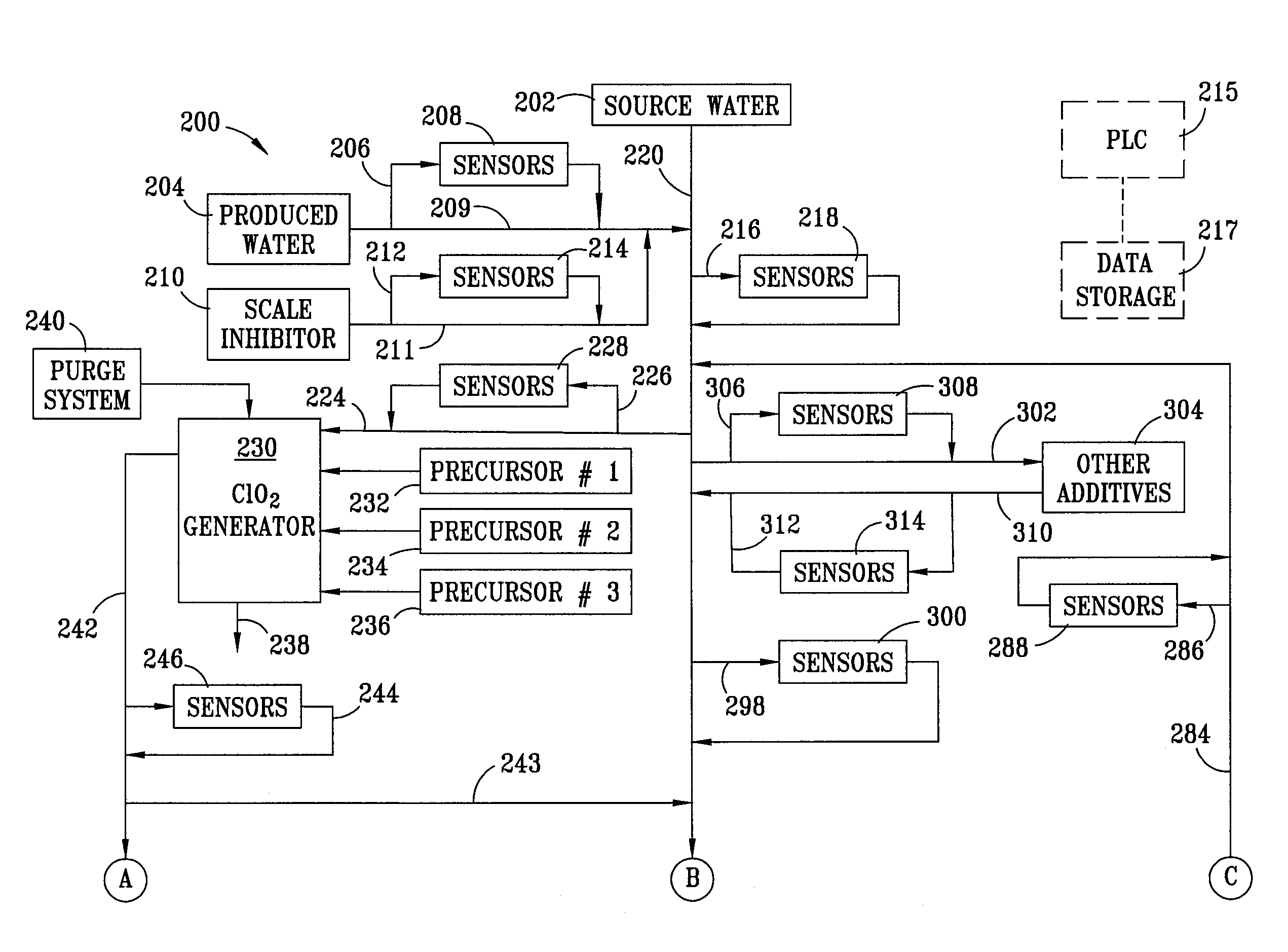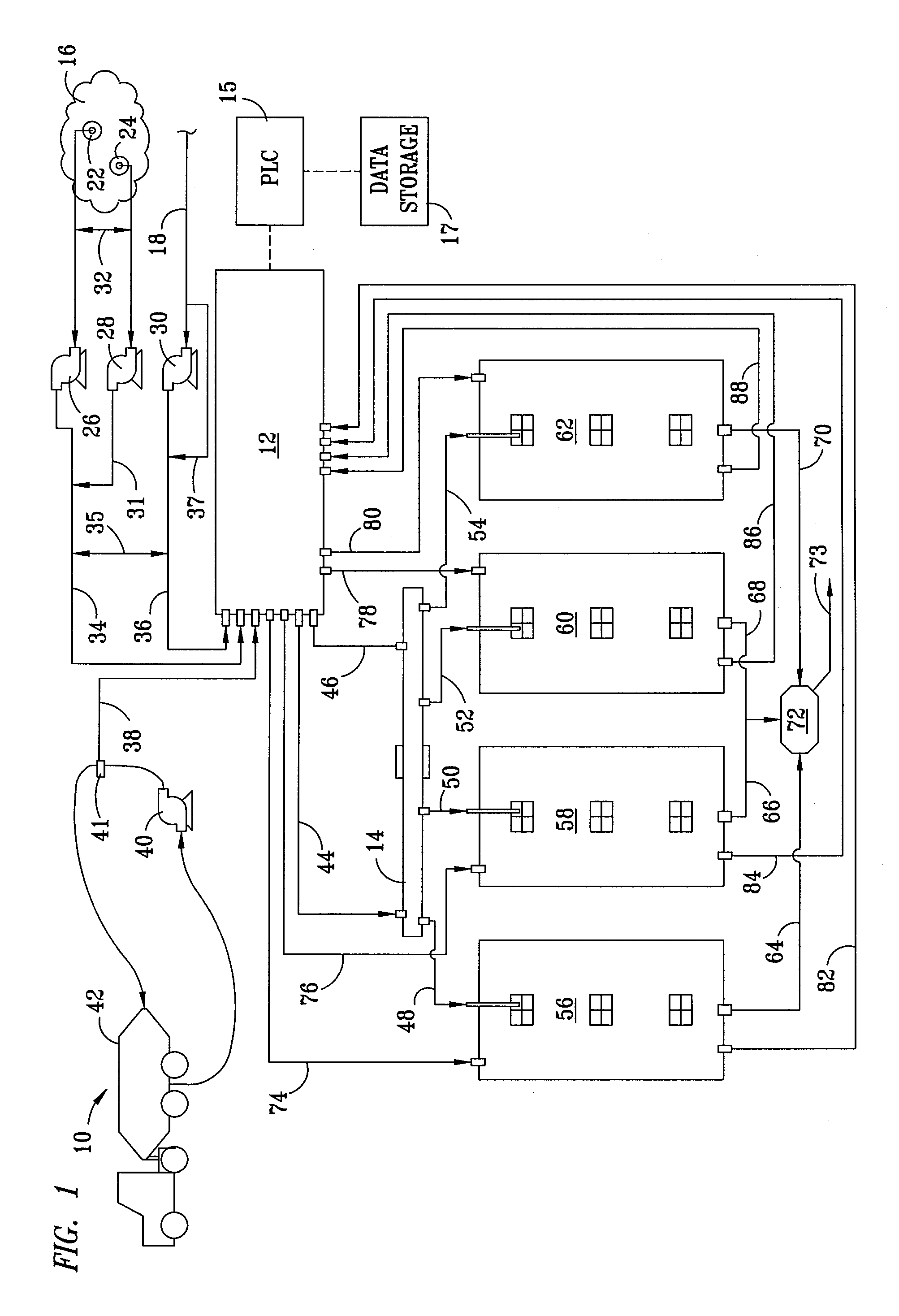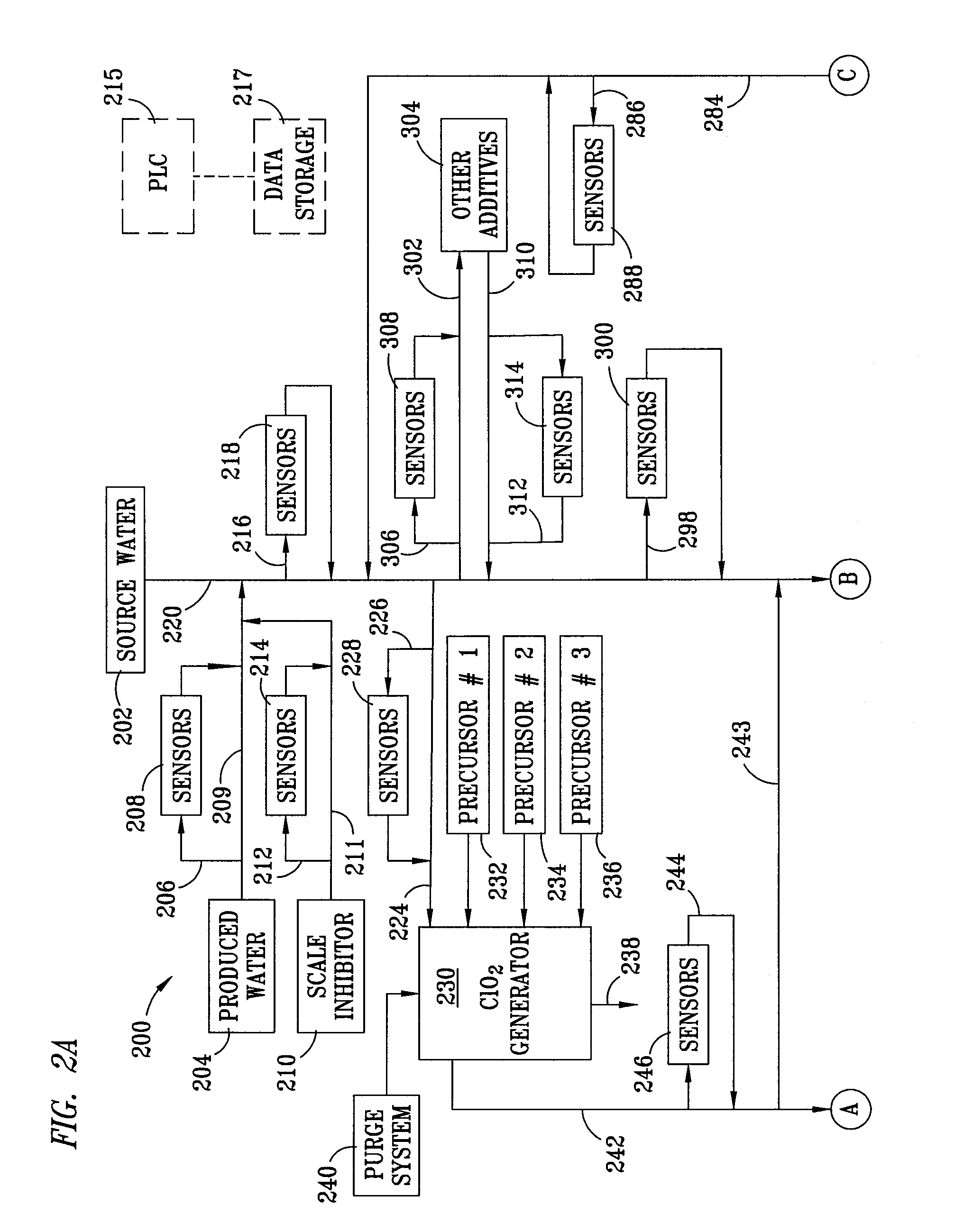[0006]A portable
system, method and apparatus are disclosed herein that can be used to effectively and efficiently treat aqueous fluids by quickly and reliably adjusting and controlling the free residual level of contaminants through the addition of one or more treating agents such as oxidizing chemicals and / or other special-purpose additives, and that can continuously log and report the related
fluid composition data on a real-time basis. The entire system and method can be controlled and operated either from the use site or from a remote location. Such aqueous fluids can be used for a wide range of applications including, for example, treating industrial cooling water,
HVAC cooling water,
fruit and vegetable wash water, or poultry
wash water, primary and secondary disinfecting of
potable water, and treatment of aqueous fluids for subsurface applications such as disinfection, drilling, fracturing,
well stimulation, sour well conversion, and well cleanout. As used throughout this disclosure and the appended claims, the term “free residual level” means oxidizing material available to react with
biological species after background contaminants or demand have been converted.
[0013]By introducing treating chemical or additive into a sidestream drawn from the main flow of pressurized aqueous fluid in accordance with one preferred embodiment of the invention, it is possible to reduce the likelihood or a possible
adverse effect or outcome from “overshooting” the
target concentration of the chemical or additive. This technique is facilitated by the use of a “PID loop” (process value, interval and derivative) or proportional independent
digital control (“
fuzzy logic”) system in the design, implementation and use of the present invention.
[0015]According to another preferred embodiment of the system and apparatus of the invention, a portable distribution manifold is provided upstream of the frac tanks in a
hydraulic fracturing operation, which manifold can be selectively used in accordance with the method of the invention to introduce
treated water into one or more frac tanks, or to recirculate frac fluid disposed in one or more tanks for possible further treatment, particularly during periods when hydraulic fracturing operations are
shut down or during other quiescent periods when fluid maintained in one or more frac tanks is otherwise at rest. By recirculating frac fluids during such quiescent periods, better homogeneity is maintained within each tank, less
precipitation of
suspended solids occurs, and the time required to resume hydraulic fracturing operations with a fluid of a known and reliable composition is significantly reduced. According to another preferred embodiment of the invention, a frac tank circulation and
monitoring system, method and apparatus are also disclosed that comprise and utilize at least one auxiliary pump, a separate
programmable logic controller (“PLC”) and, most preferably, a secondary
injection point, to precisely trim or control the
residual chlorine dioxide level in each frac tank. This capability for continuously turning the water over and for monitoring and trimming the
chlorine dioxide or other additive levels in each frac tank also enables the system operator to control compositional parameters in each frac tank even when the site operator is not performing a hydraulic fracturing operation in the associated well(s). Auxiliary booster pumps are desirably provided within the system and apparatus of the invention to establish
fluid circulation through the system and apparatus whenever inlet
water supply pumps are not operating during shutdown of the hydraulic fracturing operation. Use of the auxiliary circulation system can also provide freeze protection during otherwise quiescent periods in winter. Because the composition of the frac fluid in each separate frac tank, including the associated contaminant and additive levels, typically varies, use of the subject circulation and
monitoring system of the invention facilitates management of the
water chemistry in each tank.
 Login to View More
Login to View More  Login to View More
Login to View More 


